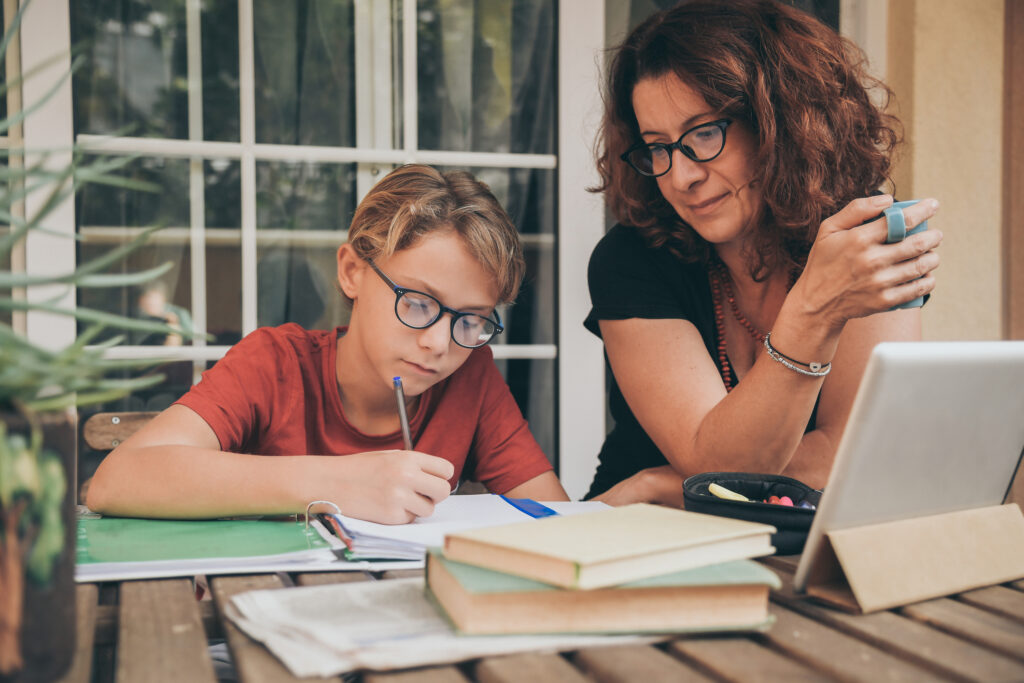Homeschooling grows as families escape failing public schools and curriculum fights, turning to do-it-yourself education. (Commentary)
Homeschooling Surges Again
In the Statistical Summary for Homeschools 2023–2024, compiled by the state’s Department of Administration, the number of registered K–12 homeschools in North Carolina stands at 96,529. Each school can serve more than one student, and the estimated number of homeschooled K–12 students is 157,642. That’s down from the peak of 112,614 registered homeschools serving an estimated 179,900 students during the chaos of 2020–2021, but up from 94,154 registered homeschools and 152,717 students last year. Before the pandemic, in 2019–2020, 94,863 homeschools served 149,173 students.
By contrast, traditional public school enrollment is declining.
“Traditional public schools have 1,358,003 students in 2023-24, losing 0.4% of students from last year to this year and down 3.6% overall from before COVID-19,” according to Chantal Brown of EducationNC, which covers education issues in the state. “Charter schools have 139,985 students in 209 schools in 2023-24, gaining 4.9% over last year.”
North Carolina isn’t alone. In May, Carly Flandro of Idaho Education News found, based on Census Bureau Household Pulse Survey data, “about 6% of Idaho students were home-schooled, on average, during the past two school years. And the state data that is available shows increases since the height of the pandemic. At the same time, public school enrollment dipped this year for the first time since the 2020-21 school year.”
Newsweek‘s Suzanne Blake added that Texas also saw a rise in homeschooling in a continuation of a trend that began “even before the pandemic.”
A National Taste for DIY Education
In fact, the Census Bureau’s Household Pulse Survey, which takes a continuing series of snapshots of data over the course of each year, shows a national increase among the ranks of homeschooled students from roughly 3.6 million in 2022–2023 to about 4 million this past year (there’s variation depending on the snapshot you examine, so it’s best to look for averages). Meanwhile, public school enrollment declines.
Based on average of survey data from 2022–2023, Johns Hopkins University’s Homeschool Hub, which compiles information about DIY education, estimates that 5.82 percent of American K-12 students were homeschooled that year. Of course, that’s down from the height of the pandemic when public schools closed or just dropped the ball.
“In the first week (April 23-May 5) of Phase 1 of the Household Pulse Survey, about 5.4% of U.S. households with school-aged children reported homeschooling,” the Census Bureau reported of comparing data from the spring of 2020 to the fall of that year. “By fall, 11.1% of households with school-age children reported homeschooling (Sept. 30-Oct. 12).”
But before the pandemic, the folks at the Homeschool Hub remind us, “homeschooled students between the ages of 5 and 17 made up 2.8% of the total student population in the United States in 2019.”
That means that, while a lot of families that took to homeschooling out of necessity returned to familiar public schools when they could, enough stuck with it to more than double the number of homeschooled kids. With COVID-19 and intrusive public health policies largely a bad memory, homeschooling continues as an increasingly popular practice as a matter of choice.
Fleeing Public Schools…
In a June article about declining public school enrollment in EducationWeek, Mark Lieberman explained that about half of the loss can be attributed to population changes as the number of kids declines, but about 20 percent fled to private alternatives and another 20 percent turned to homeschooling. (Another 10 percent are unaccounted for, though some probably skipped kindergarten and others may be in DIY arrangements such as homeschooling and microschools, but unreported.)
Lieberman delved into the school choice programs that let education funds follow students to the options of their choice rather than being assigned to brick-and-mortar public schools. But he didn’t examine what might drive families to abandon the familiar for education alternatives the require greater dedication and commitment.
Disappointment with schools’ pandemic responses clearly played a role in driving many families to try educating their own kids—and many liked the experience. But so do endless battles over how kids are taught and, especially, what is incorporated in the lessons presented to them by often deeply politicized schools. To please one faction of parents with spin that they like is to inherently alienate others.
…To Escape Pointless Conflicts
“Schools in many parts of the U.S. have become a battleground and parental involvement is one of the topics at the center,” ABC News reported last September. “Fights in school board meetings, including in Chester County, [Pennsylvania] have erupted over how race, sexual orientation, gender and other topics are brought up, or taught, in the classroom.”
Families can fight school administrators and other parents in struggles that inevitably leave those on the losing side unhappy with lesson content. It makes sense for those who lose to withdraw their children from the public schools in favor of lesson plans and approaches that meet their standards.
For that matter, it’s tempting for even those on the winning side to forego the curriculum wars and just pick the education they like for their kids without battling their neighbors. Why argue with your ideological opponents over what should be taught when you can ignore them and teach your kids what you please?
“When parents can choose where and how their children will be educated, they’re no longer at the mercy of politicians and bureaucrats,” the Cato Institute’s Colleen Hroncich wrote in 2022. “That means they don’t have to rely on political battles when it comes to education.”
That’s undoubtedly a big part of the impetus for recent school choice victories that expand options for families, as well as decisions parents and students make to embrace those options. Homeschooling and other education alternatives are on the rise because they’re liberating, and they work.
Originally published by the Reason Foundation. Republished with permission.
For more great content from School Reform News.
